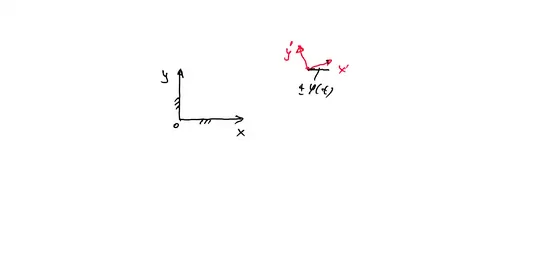Consider a free particle in a rotating reference frame. Let us say the coordinates of the particle are given by $(x',y')$ in this frame. For an observer on this frame, (I suspect) the Lagrangian is just
$$ L' = \frac 1 2 m\left[(\dot x')^2 + (\dot y')^2\right] \tag{1}$$
However, for an observer on an inertial frame with respect to this rotating frame the Lagrangian would be
$$ L = \frac{1}{2}m\left[(\dot x)^2 + (\dot y)^2\right] $$ where the transformation between $(x,y)$ and $(x',y')$ are given by
$$\begin{align} x' &= x\cos(\theta) + y\sin(\theta) \\ y' &= -x\sin(\theta) + y\cos(\theta) \\ \text{and}\quad \theta &= \theta(t). \end{align}$$
Using these transformations I get
$$L = \frac 1 2 m\left[(\dot x')^2 + (\dot y')^2\right] + 2\omega(t)(x'\dot y' - y'\dot x') + \omega(t)^2(x'^2 + y'^2) \tag{2}$$
Thus, it seems to me that if I use the EL equations for the Lagrangian in (2) I would get the contributions from pseudo forces such as the Coriolis and the Euler forces. However, for the observer on the rotating frame with the Lagrangian given by (1), on using the EL equations for that Lagrangian, I don't understand how I would be able to describe the pseudo forces.
Would I then have a non-zero 'generalized force' term in the EL equation?
